#14th Street-Canarsie line
Text

The #Livonia_Avenue_Station on the L line, Brooklyn and its upstairs neighbor, a No. 3 train.
#nyc#newyorkcity#brooklyn#Livonia Avenue Station#l line#14th Street-Canarsie line#new york city subways#elevated subways
50 notes
·
View notes
Photo



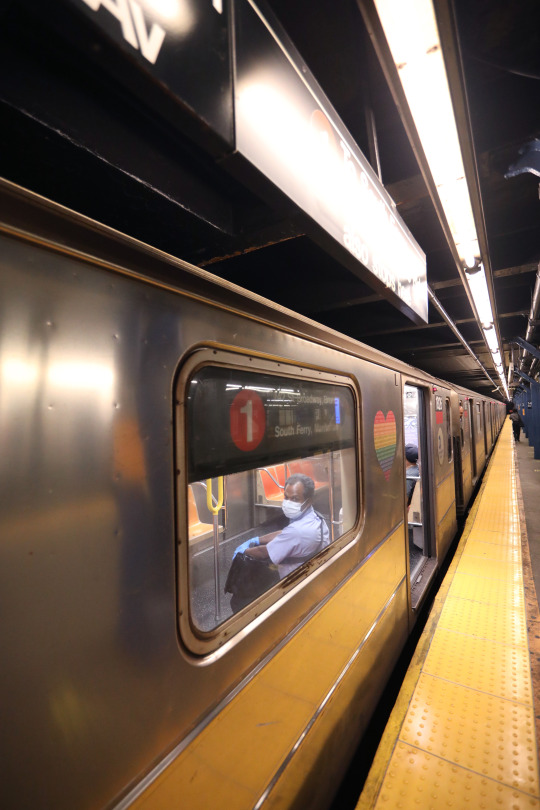
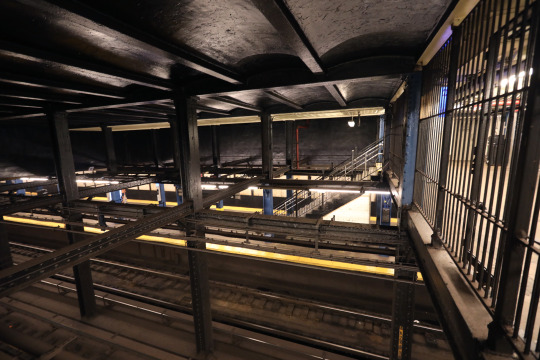
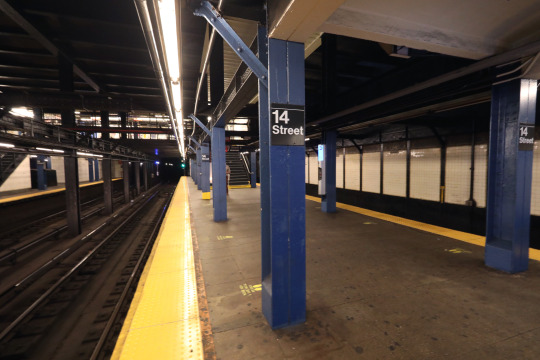

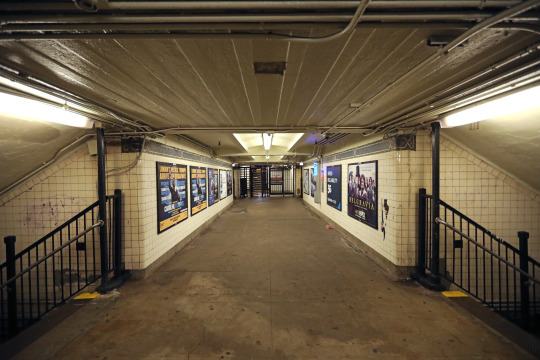
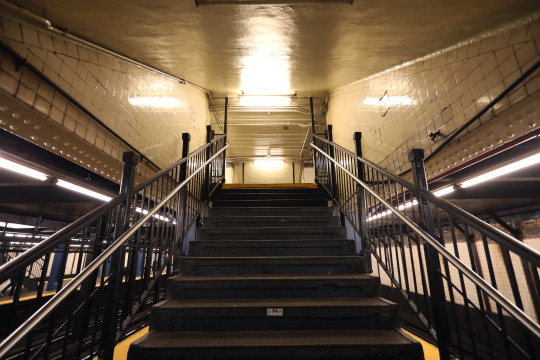
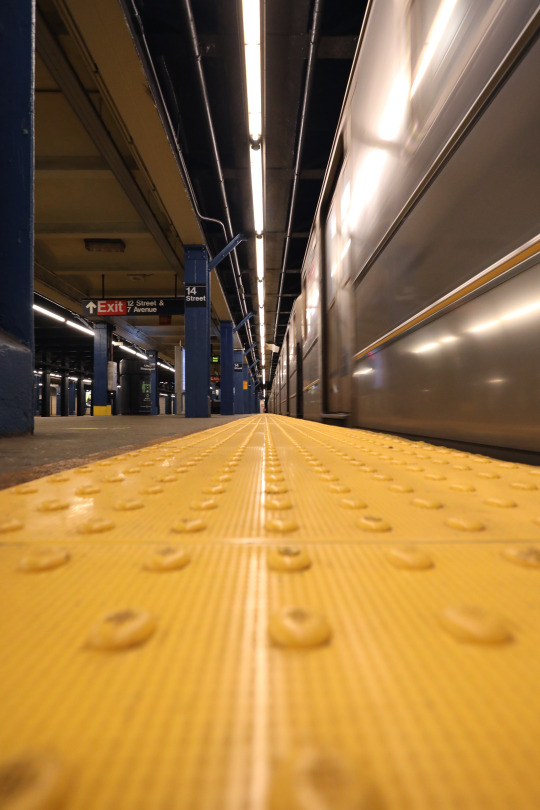
14 Street Train Station ( #2 Train )
14th Street/Sixth Avenue is an underground New York City Subway station complex in the Chelsea district of Manhattan on the IRT Broadway–Seventh Avenue Line, the BMT Canarsie Line and the IND Sixth Avenue Line. It is located on 14th Street between Sixth Avenue (Avenue of the Americas) and Seventh Avenue. It is served by the:
1, 2, F, and L trains at all times
3 train at all times except late nights
M train during weekdays
There is a local track on one end of the train station platform and the other side is express. Free transfer if you are going from uptown 1,2, or 3 trains and want to go downtown because you passed your stop. This station is 102 years old.
Borough = Manhattan
The station has an exit-only area at the center. Two staircases from each platform go up to a crossover where on either side, a single exit-only turnstile and emergency gate leads to a staircase that goes up to either northern corners of 13th Street and Seventh Avenue.
📷by aagdolla ©2020
#aagdolla photography#ny#nyc#newyork#mta#mtatrains#mtatrainstationsbyaagdolla#14 street train station#metal#steel#underground#underground station#17mm#5dmark4
12 notes
·
View notes
Photo

Eighth Avenue and 14th Street (the western terminus of the BMT Canarsie Line) as seen on September 5, 1928.
Photo from the Lundin Collection, New York Transit Museum.
66 notes
·
View notes
Text
Cuomo’s L-Train Bombshell: All (OK, Not ALL) Your Questions Answered!
No need for a long, windy intro. We all know that Gov. Cuomo torpedoed the MTA’s longstanding plans to completely shut the L-train tunnel between Manhattan and Williamsburg in favor of a less-intensive proposal that raises a million questions. So here goes…
Wait, so what’s the plan?
Even though the MTA has been working on fixing the Hurricane Sandy-damaged tunnel for three years, Cuomo has jettisoned the full 24-hour-a-day, 7-day-a-week shutdown in favor of a partial plan that would close only one of the two tunnels on nights and weekends and merely patch damaged portions of the tunnel, and mount new cables on the walls rather than painstakingly replace them inside the walls.
For years, the MTA said it needed to replace 302,000 feet of cable, 14,000 feet of rail, plus 15,000 feet of third rail, reconstruct 30,000 feet of concrete ducts, install new tunnel lights, replace pumping equipment, build a substation, replace circuit breakers, repair a fire-protection system, and repair 7,100 feet of concrete that lines the tunnel [PDF]. It is unclear what, if any, of that work will be done.
Cuomo’s engineering consultant, Mary Boyce, dean of the Fu Foundation School of Engineering and Applied Science at Columbia University, told reporters that an easier plan is possible here because it had been tried in London and Riyadh.
Forgive us if we don’t think much of the Riyadh subway system, which hasn’t even opened yet.
Why did he do it?
There’s lots of speculation, including some that Cuomo wanted to impress 2020 or 2024 presidential voters (which is complete hogwash, given that no Democratic primary voter in Iowa or New Hampshire would ever have said the words, “I was leaning towards Cuomo until I heard that some commuters in Canarsie had been inconvenienced by his decision to repair vital infrastructure”).
Obviously, this is all about Cuomo, as the Times far-from-subtly pointed out: “Mr. Cuomo appeared pleased to have stepped in to save the day,” reporter Emma Fitzsimmons wrote.
Indeed, Cuomo said he believes that straphangers favor a partial shutdown rather than a full one, though polls indicate just the opposite, as the Post mentioned in its editorial.
And Cuomo will definitely see an “L train bump,” judging by the Post’s gushing front page.
Tomorrow’s cover: Brooklyn residents thrilled after L-train shutdown nixed https://t.co/CE6DPkkZWz pic.twitter.com/EvlNQqEoGW
— New York Post (@nypost) January 3, 2019
Who is credible — Cuomo or the MTA?
Cuomo says the Canarsie Tunnel does not need to be shut because all that’s needed is fiber-reinforced polymer to patch it. (Hmm, patching it doesn’t sound very comprehensive.) This decision comes just a few days after Cuomo toured the tunnel with a hand-picked engineering team — and three years after the MTA said the repairs were absolutely essential. Indeed, the agency issued this dire statement two months ago:
The L tunnel – also known as the Canarsie Tunnel – was one of nine underwater tunnels that flooded during Superstorm Sandy in 2012. … The tunnel was flooded with enough water to fill 11 Olympic-sized swimming pools and suffered extensive damage to tracks, signals, switches, power cables, signal cables, communication cables, lighting, cable ducts and bench walls throughout a 7,100-foot-long flooded section of both tubes. Bench walls throughout those sections must be rehabilitated to protect the structural integrity of the tubes.
The MTA and city DOT said the L train tunnel looks really bad. But Gov. Cuomo doesn’t think so. Photo: MTA/DOT
Protect the structural integrity — sounds important, right?
And the MTA’s plan was very detailed because, it said, the repairs were so urgent (see one page of the agency’s handout left).
Independent analysts seemed to side with the MTA. “The repairs are necessary because saltwater inundation in 2012 caused by hurricane Sandy accelerated deterioration within the tunnel,” Crain’s reported. “Temporary work allowed the tunnel to reopen soon after the storm, but conditions continued to worsen.” (Continued to worsen sounds bad, right?)
Meanwhile, Dan Rivoli of the Daily News pointed out that the very part of the tunnel that Cuomo will patch rather than replace caused a subway derailment when it collapsed one time.
A crumbling bench wall in the G train tunnel once caused a derailment.https://t.co/MtwQiZ08EN
Those are the stakes facing L train commuters now that the repairs are a patch job instead of a full renovation.
Here's the exchange with me and the governor on this today: pic.twitter.com/zzzL92ew8Y
— Dan Rivoli (@danrivoli) January 3, 2019
And MTA board member Veronica Vanterpool was stunned to find out about Cuomo’s announcement shortly before it was made, given the supposedly dire condition of the tunnel.
“What are the long-term implications of this decision? Are we just essentially putting a Band-Aid on a problem that has been well documented?” she said, according to amNY.
Riders Alliance Executive Director John Raskin pointed out that the emperor is the one with no clothes in this debate.
“At the end of the day, what riders care about is whether the L train is repaired for the long term, and how much disruption it will take to get there,” he said. “The governor’s plan may or may not work, but you’ll pardon transit riders for being skeptical that a last-minute Hail Mary idea cooked up over Christmas is better than what the MTA came up with over three years of extensive public input.”
And interim MTA board chairman Freddy Ferrer didn’t help Cuomo sound very credible when he told reporters, “You might ask, ‘Well why wasn’t this approach considered earlier?’ The answer is that the integration of these approaches — there are several — and the technology had not previously been applied in the context of a rehabilitation project. It’s innovative, creative and we deem it a sound plan.” (A sound plan? Cooked up in a couple of weeks?)
Who does this help?
Cuomo wants us to believe it helps all commuters.
“You would have roughly 250,000 people who would need a different way to get to work,” he said of the shutdown. Closing the tunnels only on nights and weekends will “be a phenomenal benefit to the people of New York City,” he added.
Judging by the coverage — from NY1’s report of blissful residents of 14th Street to New York Times Metro Editor Clifford Levy’s horrendous tweet — NIMBYs along 14th Street are pleased, as are selfish inter-borough subway riders.
But aren’t we forgetting something…
Who does it hurt?
Almost everyone:
One of the government’s basic tasks is to maintain infrastructure. If, indeed, the Canarsie Tunnel is damaged as badly as the MTA said, failing to fix it now will bring much more pain (and expense) later.
The biggest losers, of course, are the L-train riders who use the train on nights and weekends — which may not sound like a lot of people to daytime commuters, but the L train is one of the busiest lines on nights and weekends. There’s also a class issue, as nighttime riders tend to be working people, as Erwin Figueroa of TransAlt and others pointed out.
As always, poor and POC New Yorkers will bear the brunt of this new "plan" for the L train, as shutdowns during nights and weekends will impact them the most. The bike lanes, busways and longer G trains need to remain as planned. #CuomosL
— Erwin Figueroa (@TransitErwin) January 3, 2019
People who were already using the new protected and on-street bike lanes — and were looking forward to HOV3 lanes on the Williamsburg Bridge — all which may soon be erased because of the “sea change” of Cuomo’s announcement, Mayor de Blasio said. “We’re going to evaluate what [the announcement] means and if we’re going to look at these things in another light.”
People who wanted to reclaim our roadways from car commuters, who will likely again be able to drive over the Williamsburg Bridge in their single-occupancy vehicles and Ubers.
Most important, the MTA’s credibility has now been completely undermined by Cuomo, which is a problem because…
Wait, doesn’t Cuomo need the MTA to look good right now?
The timing of the announcement is a horrendous public relations disaster for Cuomo, who is about to head back to Albany to push congestion pricing to a less-than-enthusiastic legislature. In many interviews with Assembly and Senate lawmakers, Streetsblog has found intense ambivalence among outer-borough legislators, who wrongly believe that many of their constituents regularly drive into the city (very few do, statistics show) and that congestion pricing would hurt working-class people (car commuters tend to be wealthier overall).
So just as he’s about to counter that hemming and hawing with a bold plan to raise $1 billion per year for the MTA, Cuomo basically undermines the MTA’s credibility as a steward of the transit system. Even the spokesman for Mayor de Blasio — who has also waivered on congestion pricing — pointed that out.
“Like everyone else, the mayor thinks the MTA has some real explaining to do about how it has handled this for the last few years,” spokesman Eric Phillips said in a statement that also questioned the MTA’s abilities.
Aaron Gordon of Signal Problems also raised these questions on Friday morning:
I don’t know how the MTA, as an agency, recovers whatever credibility it had left. What happens the next time the MTA determines a major public works project must be undertaken? Who is going to take them seriously? Who is going to defer to their expertise? What does this mean for Byford’s upcoming appeals to the state legislature to give him some $60 billion? Are elected officials going to say “we believed you about the L shutdown being necessary, why should we believe you now?” I suspect Byford will try to spin it as a sign of the agency’s nimbleness and willing to accept best ideas, but I don’t know how that will play.
Will Mayor de Blasio keep the good parts of the L shutdown?
As noted above, the mayor is skeptical that he needs to keep the good stuff like the sort-of protected bike lanes on 12th and 13th streets — which NIMBY groups oppose because they removed on-street car storage — and dedicated bus lanes. Advocates are demanding that the street safety and transit improvements remain, but NYC Transit President Andy Byford said new ferry service would certainly be eliminated.
“Smart transportation plans have been laid in concert with community and elected leaders that should still go into effect, including the transit way on 14th Street, which would serve as a model for improving bus travel throughout the city; experimentation with HOV restrictions on East River crossings; and accessibility and station circulation upgrades at First Avenue, Sixth Avenue, Union Square, and Bedford Avenue,” the Regional Plan Association said in a statement. “Changes like these would improve the commutes of hundreds of thousands of New Yorkers and visitors to our city and help our city address pressing transportation challenges.”
Should Andy Byford resign in protest?
Of course he should. Byford was informed of Cuomo’s decision shortly before it was announced publicly, putting him in the position of having to answer for a governor who had just bigfooted him worse than a raging Sasquatch. If Cuomo’s plan succeeds, Cuomo gets the credit. If it fails, Byford will have to clean up the mess.
Poor guy sounds sick and tired. https://t.co/GeCdok9NyE
— Interim MTA Chair David 'Amazon Cuomo' Meyer (@dahvnyc) January 3, 2019
Meanwhile, Byford looks like an ineffective leader just when he’s trying to restore faith in the system he oversees.
He should consider resigning in protest, as Travis Eby, a member of the Tri-State Transportation Campaign pointed out in a tweet.
Everybody working for Cuomo should resign in protest, starting with Andy Byford https://t.co/D6bsv7fsPV
— Travis R. Eby (@travis_robert) January 3, 2019
Oh, and what’s with Clifford Levy’s New York Times Metro section lately?
Before anyone could digest the ramifications of Cuomo announcement, Levy, the editor of the Metro section of the supposedly sober Gray Lady, tweeted, “Brooklynites, rejoice! Cuomo plans to cancel the full shutdown of the L train between Brooklyn and Manhattan.”
It was a weird take from an important opinion-maker — and transit advocates let him have it all day.
You are the head of the metro section and you don’t know this is a Cuomo ham job?
— Cameron O'Leary (@CamtrakAcela) January 3, 2019
“Metro Editor at New York Times” clueless. Makes you wonder how a person gets that job title while not comprehending the issues related to it.
— Thomas (@thomstern) January 3, 2019
Worse, Levy’s Twittergate comes just one day after his Metro section published a story questioning why the Port Authority should continue running the PATH train — which serves 82 million rides a year — because it loses money. The implication that Levy allowed into print is that transit and other infrastructure exists to raise money rather than fulfill its actual purpose: to foster the regional economy. Levy’s Metro section also recently reported on the need for adult crossing guards in Tribeca without even mentioning congestion pricing or holding any politician accountable for allowing suburban commuters to terrorize city pedestrians.
Source: https://nyc.streetsblog.org/2019/01/03/cuomos-l-train-bombshell-all-your-questions-answered/
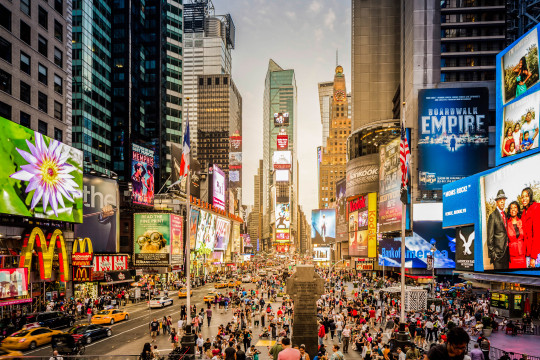
0 notes
Photo
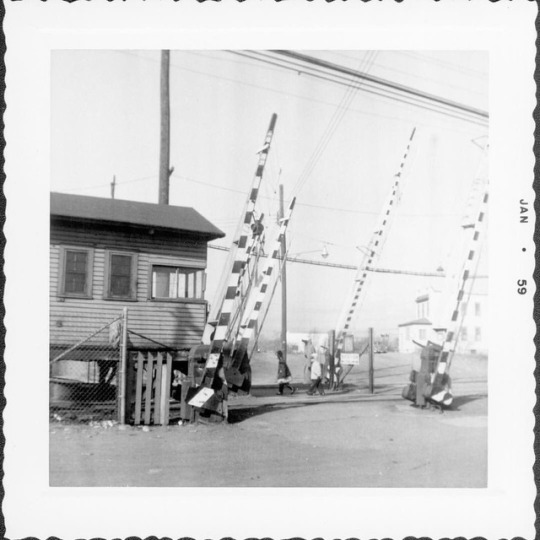
#TransitTuesday! Did you know that the NYC subway system had a grade-level crossing, with manually controlled gates, until 1973? It was at East 105th Street in Canarsie!⠀ .⠀ The original railroad service along these tracks was the Brooklyn and Rockaway Beach Railroad, a steam railroad established in 1865. Originally a single track (until 1894), this railroad service moved passengers from East New York to Canarsie. In 1906 a new station replaced the original steam-line station at East 105th Street. The railroad had been acquired by the Brooklyn Rapid Transit Company. The BRT electrified the line north of New Lots Avenue via a third rail and the line south of New Lots Avenue was electrified with trolley wire (third rail electrification was added to stations south later). The section from East New York to New Lots was also elevated. The new station at 105th had a grade level crossing with gates controlled manually by a staff of towermen.⠀ .⠀ In 1906 the BRT line ran from Canarsie Landing to Broadway Ferry at the foot of Broadway in Williamsburg (traveling over the Fulton & Broadway Elevated line west of Manhattan, now Broadway, Junction). Later it was extended to Chambers Street in Manhattan. In 1928 the original Canarsie line was connected to the 14th Street line and in 1931 it was extended to Eighth Avenue, creating the route of the current L train.⠀ .⠀ The grade level crossing at 105th Street, which was the final one in the system, closed on August 5, 1973 at 5AM when the last towerman went off duty. Once a quiet and sparsely populated area, by the late 1960s a boom in new housing developments and a planned industrial park prompted plans for a safer crossing. A new elevated station and pedestrian crossing were constructed in 1973 and renovated in 2005.⠀ .⠀ .⠀ 📸: John D. Morrell⠀ November 1, 1959⠀ via @brooklynhistory⠀ #urbanarchive #nychistory #canarsie #Ltrain #gradecrossing #railfan #transportation #MTA #nycsubway⠀ Join the Urban Archive beta 📱 [link in bio] via ✨ @padgram ✨(http://dl.padgram.com) https://www.instagram.com/p/BV2QbhnHUna/
1 note
·
View note
Text
Cuomo’s New L-Train Shutdown Plan Is Basically As Bad As We Expected
The MTA confirmed on Wednesday that L-train repair work endorsed by Gov. Cuomo will cause serious disruptions — undermining the agency’s denials that had been exposed in Streetsblog’s earlier scoop.
The city and MTA will nix the inter-borough shuttle buses and surface-level improvements such as the 14th Street busway and Williamsburg Bridge HOV3 restriction that had been created for the now-scrubbed 15-month complete shutdown. The L train will keep running all day and night between Manhattan and Brooklyn — as the governor demanded — but service will be greatly diminished on weeknight and weekends as the MTA works to repair Hurricane Sandy damage in the Canarsie tunnel.
On weeknights, service between Manhattan and Brooklyn will begin to slow just after the evening rush, at 8 p.m. Headways will grow to every 20 minutes after 10 p.m. — the current arrangement between 1:30 and 5 a.m. Weekend service will be significantly diminished, with 20 minute headways — up from as little as four minutes now. Trains east of Lorimer Street in Brooklyn will run with 10-minute headways all weekend and after 8 p.m. on weeknights. There will be additional service on the G train, but the train lengths will not be expanded.
MTA Managing Director Ronnie Hakim told reporters that the agency is currently convinced that more night-and-weekend mitigation isn’t necessary because other subway lines will be sufficient to replace enough L train trips. But the MTA may change the plan after upcoming public meetings.
“This is not a final plan. This is the evolving proposal,” Hakim said, adding later, “We’re going to look to see just what is the demand. Our theme for our customers has been: If the L doesn’t work for you, please find other subway service.”
Where the MTA expected displaced L train riders to travel during the now-canceled shutdown. The thicker the line, the more additional passengers during the L train shutdown. Graphic: MTA
Only one bus service improvement is certain: Hakim said 14th Street buses will run every three minutes on weekends, up from the current range of four-and-a-half minutes to seven-and-a-half minutes between buses. But the previously planned dedicated busway is no longer in the works, and the launch of M14 Select Bus Service, originally scheduled for April, has been delayed.
The MTA may add more nighttime bus service on 14th Street, but will not be providing shuttle buses between the boroughs.
“At this point, we don’t anticipate closing 14th Street to vehicles, but we do anticipate working with NYPD in making our bus lanes … work as efficiently as possible,” Hakim told reporters.
Hakim did not confirm whether stations at First and Third avenue will become “exit-only” due to large crowds that are expected to gather on the platforms because of the extended headways. She said only that the MTA “may” make those stations exit only.
To avoid crowding at and around the Bedford Avenue station, the MTA may provide shuttle bus service linking the Bedford Avenue L stop; the Lorimer/Metropolitan stop on the L and G; and the Marcy Avenue station on the J and M lines.
Wednesday’s announcement matches up more or less with documents leaked to Streetsblog and Gothamist three weeks ago. At the time, transit officials claimed Streetsblog’s reporting was “irresponsible” because it was based on “draft and outdated reports.” The agency claimed the story did a “disservice to New Yorkers and our customers who need reliable, official information.” Then the MTA failed to invite Streetsblog to the conference call that basically confirmed the very reporting that it had publicly disputed.
Tunnel repairs will begin at the end of April, as previously planned. The MTA has yet to determine how long those repairs will take. L train ridership remains high well into the night and early morning. Huge headways are likely to result in severe over-crowding, which may cause wealthier riders to opt for for-hire vehicles.
The MTA could not provide any information on potential negative impacts on surface-level traffic. Activists blasted the news.
“It is all of the impact of the full shutdown with none of the alternatives,” said Transportation Alternatives North Brooklyn Chairman Philip Leff, whose group spent three years advocating for effective service mitigations. “This is a catastrophe for North Brooklyn. This just further extends the extent of the disruption, and is a complete lack of recognition that many people work in an economy that is not 9 to 5 on a Friday.”
Transportation Alternatives was more succinct.
“Mayor de Blasio’s new plan on 14th Street could be summarized in one sentence: ‘City to bus riders: drop dead,’” the group’s advocacy director Tom DeVito said.
“The MTA is right to run buses as frequently as every three minutes along 14th Street when L train service is severely reduced,” he added. “But these buses will plod along at walking speed if they’re forced to share 14th Street with space-hogging cars. Currently the M14 bus, which runs along 14th Street in mixed traffic, is among the slowest in the whole city, traveling at an average speed of 4 mph.”
Update (5:31 p.m.): In a statement provided to Streetsblog, de Blasio spokesperson Eric Phillips said the future of the 14th Street busway, HOV3 restrictions, and other street redesigns tied to the L-train shutdown is as-yet-undetermined.
“The Mayor hasn’t decided what to do with the city-controlled mitigation plans on the bridge and on 14th Street,” Phillips said. “As we learn more and more detail every day from the MTA about its closure of the L train, we’ll continue to design efforts and review existing plans to help affected riders.”
Source: https://nyc.streetsblog.org/2019/02/13/cuomos-new-l-train-shutdown-plan-is-as-bad-as-we-expected/
0 notes
Photo

(L)ifeline is Shutting Down
At 5 p.m. on a Tuesday evening, amidst the heavy foot traffic of rush hour, New Yorkers are seen shuffling up and down the the 14th Street entrance of the L train. Hidden underneath greasy turnstiles, broken escalators, and construction signs, people stand at the platform waiting anxiously for the L train to arrive. Some are spotted on their phones, listening to music, and others are gazing off into the distance.
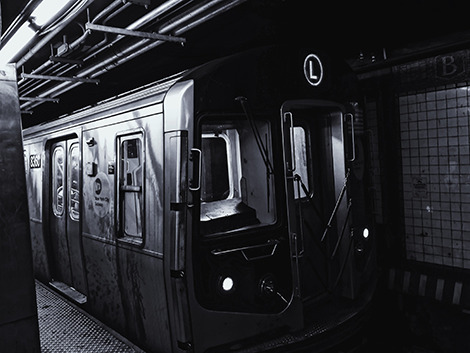
Amongst them is Anthony Hernandez, a twenty year old junior studying sociology at New York City’s Hunter College. He’s casually dressed, donning a corduroy jacket, paired with black slacks and tennis shoes.When asked to comment on the L’s shutdown, he shook his head in disapproval. “I think it sucks. People depend on this train. Without the L, we have to depend on buses and they take forever. I’m a student so I don’t know how I’m gonna get through next year.” Although claims have been made by the MTA that they have a plan in place for the outpour of new commuters, concrete alternatives have not been offered. A staggering 400,000 people, just like Anthony, who rely on the L for their daily commute are left with no resolution.
While the reasons for the L train shutdown still remain obscure to the New York public, many attribute it due to Hurricane Sandy in 2012. The storm left 71 billion dollars in damages. A 2017 MTA report stated that Hurricane Sandy flooded the Canarsie tunnel with over seven million gallons of saltwater, permanently damaging the cable lines and train tracks. Despite the hard evidence, others continue to attribute it to corporate greed.
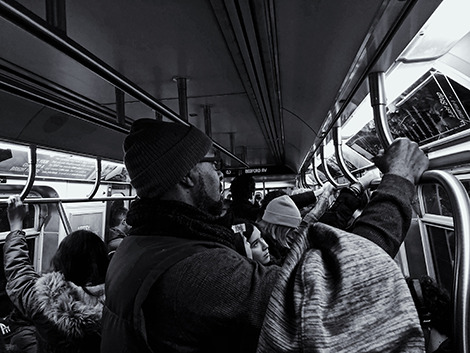
Alternatives the MTA promises include free MetroCard transfers, buses running over the Williamsburg bridge, and longer subway trains. Yet, many New Yorkers remain skeptical of the efficacy of this ambitious undertaking, as the MTA is notorious for unexpected train delays, weekend shutdowns, and transfers, all on a daily basis. Commuters have already begun to experience a taste of the catastrophic shutdown, as the L track service had been suspended on the weekends in October and November of this year.
According to the 14th Street Coalition, a group dedicated to preventing the proposed plans, this is a “brutal neglect of public welfare” on behalf of the New York City Council. In a sit down interview with the coalition's chairman, Elizabeth Callahan, she reveals that not only will the L train shutdown contribute to the dreadful congestion of traffic on 14th Street, a major two-way street, but will also negatively impact the environment.
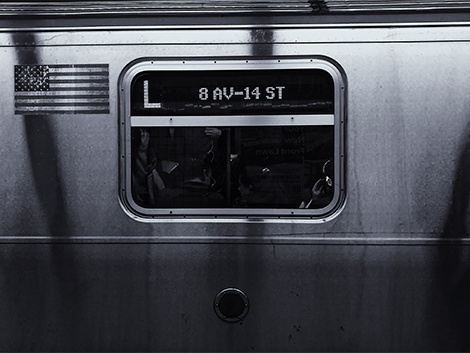
“It’s going to be a nightmare to travel,” says Mahdini, a twenty-something year old girl waiting for the Brooklyn-bound train. She lives in Queens, but rides the L train frequently to visit her boyfriend.
The train comes to a halt in Williamsburg, when an older Jamaican man named Lloyd expresses his confusion when informed of the shutdown. “The L is shutting down? When? This is not good. This is not good.” His weathered hands rest on his worn denim jeans. He taps his dusty boots on the ground frantically. “I’m going to need to find another job or tell my boss I’m going to be late every day.” His eyes fill with tears when informed the L will close in early April of 2019.

With constant back and forth public statements from the MTA, commuters are left to their best guess as to when the train will close permanently, subsequently preventing them from finding practical alternatives. Efforts against the shutdown have not gone unnoticed. The 14th Street Coalition has written countless letters to the MTA, making a slew of requests demanding that the L train remain in service while under construction.
The shutdown has now been referenced as an “emergency situation”, an accurate statement, considering the 700,000 people who will be impacted. This is just another example of the ineffectiveness of NYC to take into consideration. As April of 2019 inches closer, New Yorkers will soon feel the impact of life without the L.
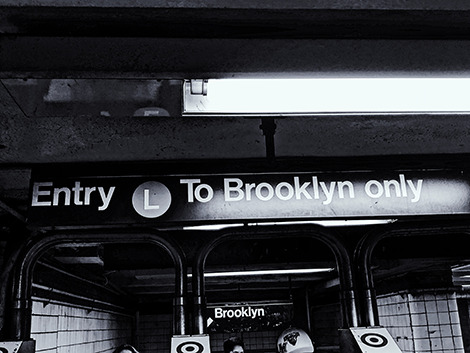
Take action now. Visit www.14thstreetcoalition.org.
0 notes
Text

From 2016: An L train runs towards the Broadway Junction Station, #Brooklyn.
#nyc#newyorkcity#brooklyn#Broadway Junction Station#l line#14th Street-Canarsie line#elevated subways
14 notes
·
View notes
Photo
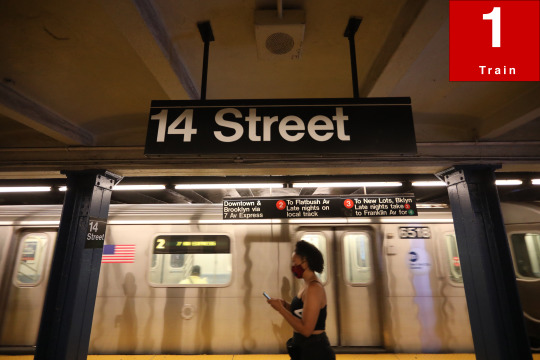
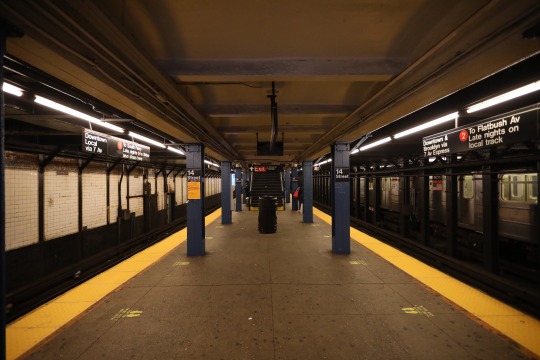
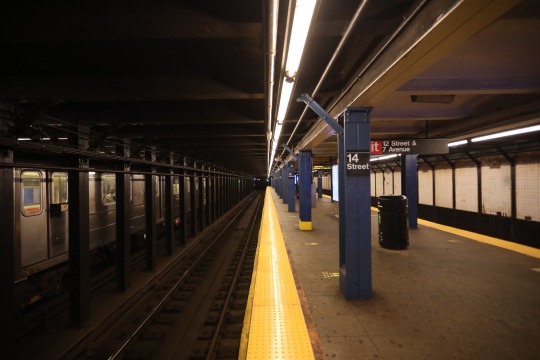

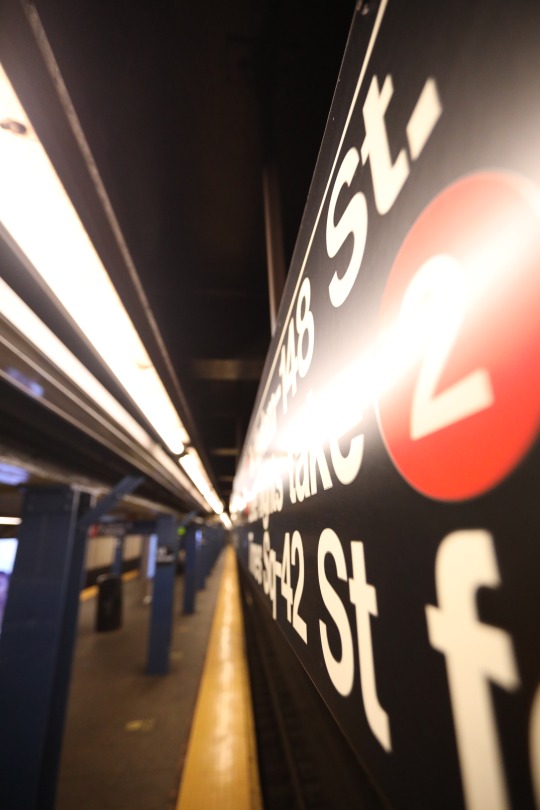

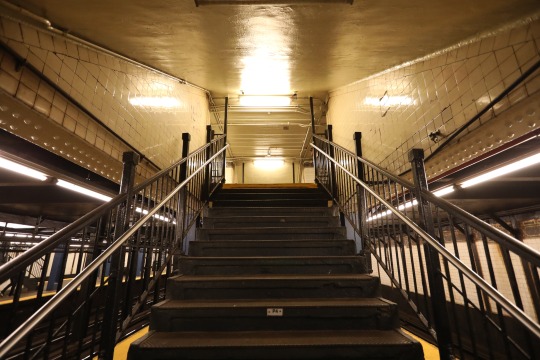

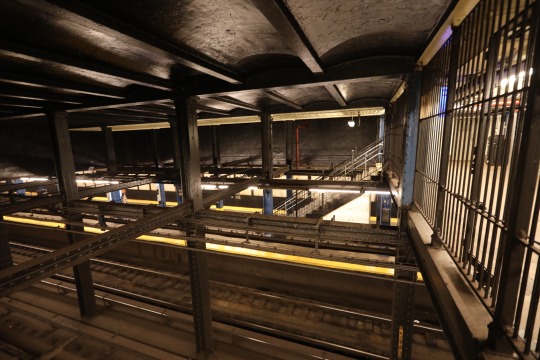

14th Street Train Station ( #1 Train )
14th Street/Sixth Avenue is an underground New York City Subway station complex in the Chelsea district of Manhattan on the IRT Broadway–Seventh Avenue Line, the BMT Canarsie Line and the IND Sixth Avenue Line. It is located on 14th Street between Sixth Avenue (Avenue of the Americas) and Seventh Avenue.
You can transfer to #2, #3 and L trains. Transfer from uptown to downtown is free just in case you need to go in the opposite direction.
Neighborhood=Chelsea, Greenwich Village, Union Square
📷by aagdolla ©2020
#mta#aagdolla photography#ny#14th street#14th street train station#nyc#newyork#newyorkunderground#metal#steel#underground#mtasystem#aagdollaphotography#17mm#mtatrainstationsbyaagdolla#1train#2train#3trains
12 notes
·
View notes
Text

From 2016: The #Rockaway_Parkway_Station on the L line, #Brooklyn.
#nyc#newyorkcity#brooklyn#Rockaway Parkway Station#l line#14th Street-Canarsie line#new york city subways
10 notes
·
View notes
Text

From 2017: An L train runs towards the tunnel from the #Broadway_Junction_Station, #Brooklyn.
#nyc#brooklyn#Broadway Junction Station#l line#14th Street-Canarsie line#newyorkcity#new york city subways#elevated subways
20 notes
·
View notes
Text

The #Third_Avenue_Station om the L line, #Manhattan.
#nyc#Manhattan#3rd Avenue Station#l line#14th Street-Canarsie line#newyorkcity#new york city subways#existing light photography
22 notes
·
View notes
Text

From 2017: An L train enters the #Broadway_Junction_Station, #Brooklyn.
#nyc#brooklyn#Broadway Junction Station#l line#14th Street-Canarsie line#newyorkcity#new york city subways#elevated subways
18 notes
·
View notes
Text

From 2016: An L train runs towards the Broadway Junction Station, #Brooklyn
26 notes
·
View notes
Text

From 2015: The #Rockaway_Parkway_Station on the L line, #Brooklyn.
#nyc#Brooklyn#Rockaway Parkway station#l line#14th street canarsie line#newyorkcity#new york city subways
17 notes
·
View notes